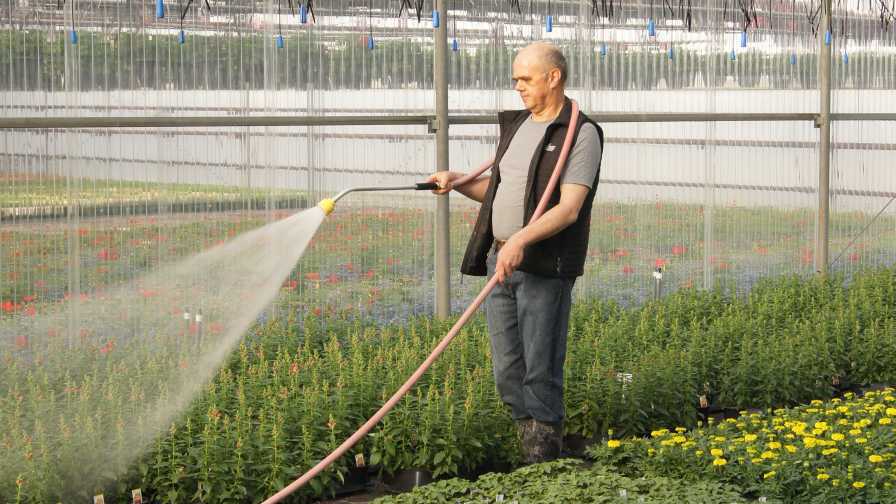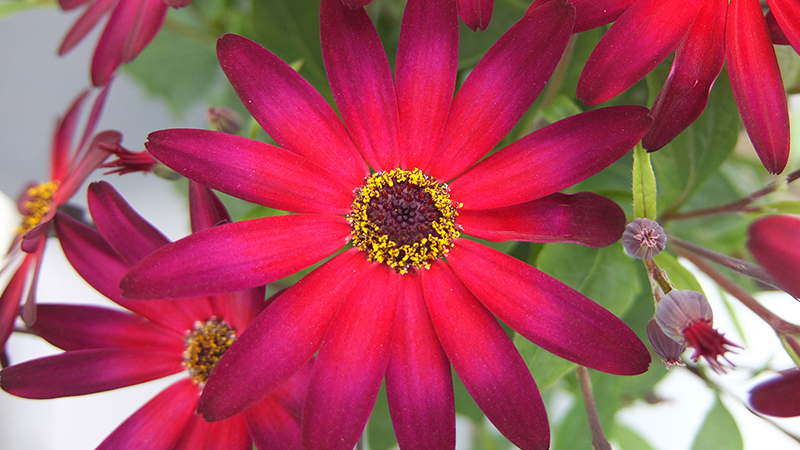Get a Handle on Hand Watering Your Plants

Hand watering plants may seem straightforward, but there are many things that can go wrong should you over or under water.
Photo courtesy of Jeffery’s Greenhouses
Your plants need proper watering to stay happy and healthy. Irrigation systems do much of the heavy lifting in the greenhouse, but what about when you need to hand water potted plants and flats? Here is a crash course in what you need to know about hand watering.
Why Should I Worry About Watering?
Watering plants may seem straightforward, but there are many things that can go wrong should you over or under water.
Plants can wilt if they are under-watered, while over watering can lead to plant roots developing rot and other fungi.
According to Albert Grimm, Head Grower of Jeffery’s Greenhouses in St. Catharines, Ontario (and former Greenhouse Grower Head Grower of the Year), one of the biggest mistakes growers make when they water is to develop watering panic. He describes watering panic as when a grower sees a plant starting to wilt and then overcompensates for the lost water too quickly.
“If we suddenly inundate the substrate and the roots with an abundance of water, the root hairs do not have enough time to shut off their water pumps,” Grimm says. “Water rushes into the cells, and the resulting internal pressure bursts their tender membranes. The root hairs explode. The resulting wounds allow diseases like Pythium to establish.”
What Can I Do to Make Sure My Plants are Properly Watered?
The best way to make sure you are watering your plants properly is to test different potted plants to see how long you should hold a hose above each crop. A.M.A. Horticulture created a video showing how this is done below:
Once you have seen what works best for your soil and crop, it is time to start hand watering. A.M.A. recommends using a hose wand that is of comfortable length, so you do not have to stretch yourself too far.
What Tools Should I Use?
Doug Cole, President of D.S. Cole Growers, uses “Hoses, ball valves, 18-inch wands, and blue breakers.”
These tools allow Cole to water at an even height, so each plant receives the same amount of water avoiding oversaturation.
These tools are really all you need should you wish to water efficiently by hand, Cole says.
What If My Crops are Wilting?
Grimm says the best thing to do is remain calm.
“Give the plants no more than a few drops of water, preferably over the foliage to reduce stress,” he says. “After 20 minutes, give them a few drops more and let the roots know that water is coming. Give the roots time to adjust and then re-hydrate the soil very slowly by watering repeatedly over an 8- to 10-hour period.”
If you give your plants water slowly over time, they are more likely to recover than if you were to inundate the crops all at once, Grimm says. This will prevent any rot from developing and lead to a happy and healthy crop.










